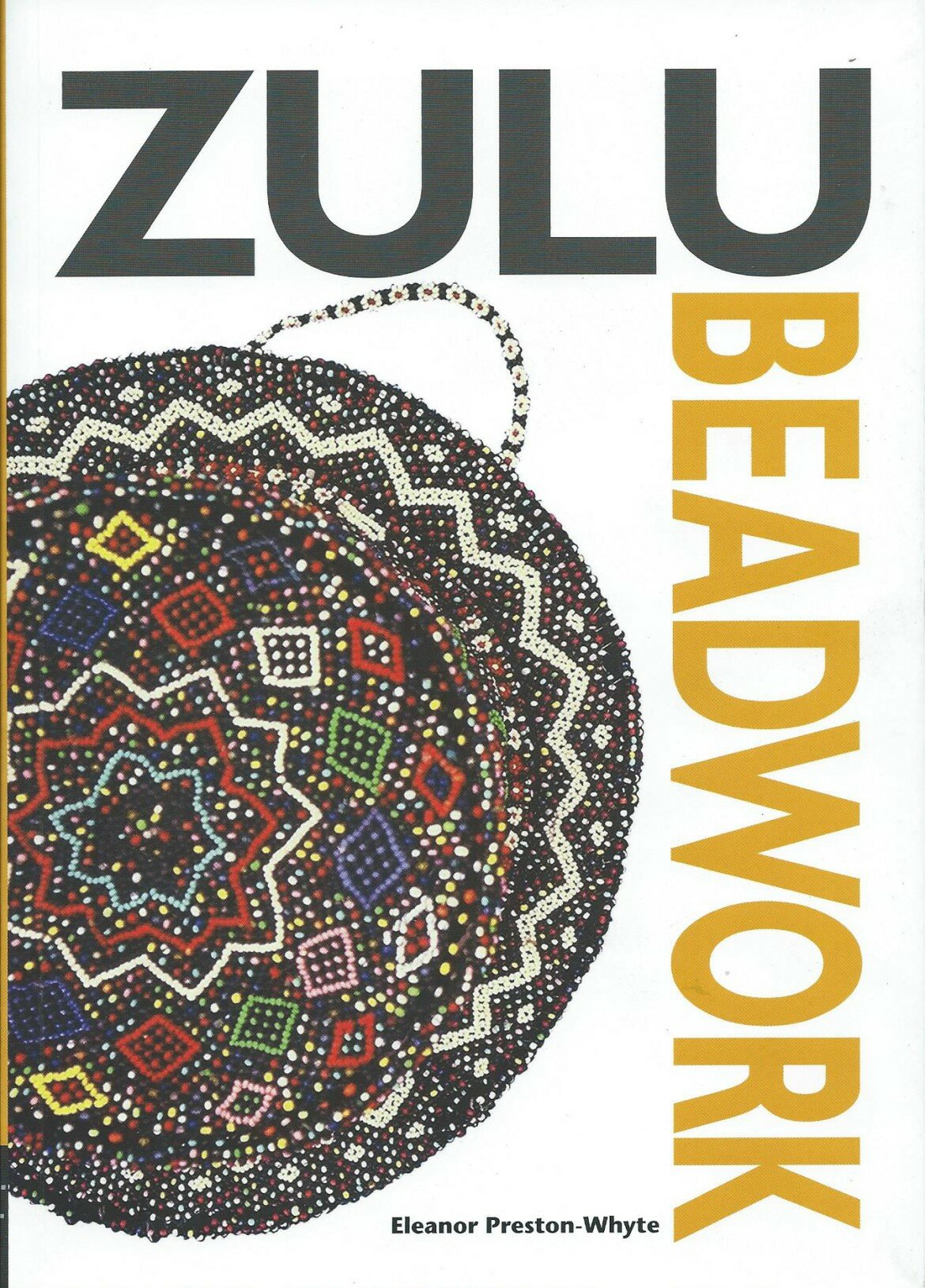
ZULU BEADWORK
Author: Eleanor Preston-Whyte
Publisher: Print Matters
ISBN : 978-0-9870293-0-0
Reviewer: Dr Dawn Gould
The author has written a finely detailed book that has been closely researched over a long period of time. The details encourage the reader into a world, maybe not very widely known, but which should be known to all who buy a piece of beadwork. A written definition of beads is given as “beads are small balls pierced for stringing.” True beads have to be pierced but beadwork as set out in ZULU BEADWORK is much more than that.
As the pages are turned words are enhanced by photographs taken of middle 19th century painted portraits illustrating beadwork as adornment. These and coloured photographs of bracelet, a choker, anklets, necklets are either in public or private collections. There are also black and white drawings and many modern photographs illustrating traditional, social and commercial aspects of the craft.
The history of beads holds one’s attention as emphasis is placed on the usage for adornment, tradition, communication but it also arouses curiosity. Before glass beads were imported what materials were used for the above purposes? They were fashioned from “wood, shells, seeds and animal teeth” perhaps also clay. As time passed glass beads were available in a variety of colours as were the less expensive plastic beads. Of importance is that as the demand for beadwork grew, so did the possibility for women to earn money for themselves. The commercial desire to become involved saw craft shops, restaurants, hotels, stalls along the KZN sea front involved in the selling of the offerings to local citizens and tourists. Beading attracted the fashion designers and became part of the dress style of the affluent. In the countryside trading stores began stocking the less expensive beads and craft work.
Also of interest is the confrontation that took place when the Christian missionaries reacted not only against the dress of the Zulus but also the decorative beadwork that was worn. This reaction resulted in a division between those who converted to Christianity and those who retained tribal beliefs. But as often happens time brings reality to new ideas and eventually the clergy saw the value of wearing robes with beading designs.
The author has added details of museums with holdings of Zulu beadwork; where to purchase beadwork; recommendations for further reading and a bibliography. On page 5 second paragraph Professor Preston-Whyte, a social anthropologist states: ” This book seeks to capture the beauty and complexity of Zulu beadwork by telling a number of parallel, but interesting stories.” I feel that this is exactly what she has achieved.
The cultural importance of beadwork is suggested by the fact that museums are now displaying beadwork from various parts of the country. In KwazuluNatal there is the Vukani Cultural Museum.
Colourful and black and white illustrations from various collections
